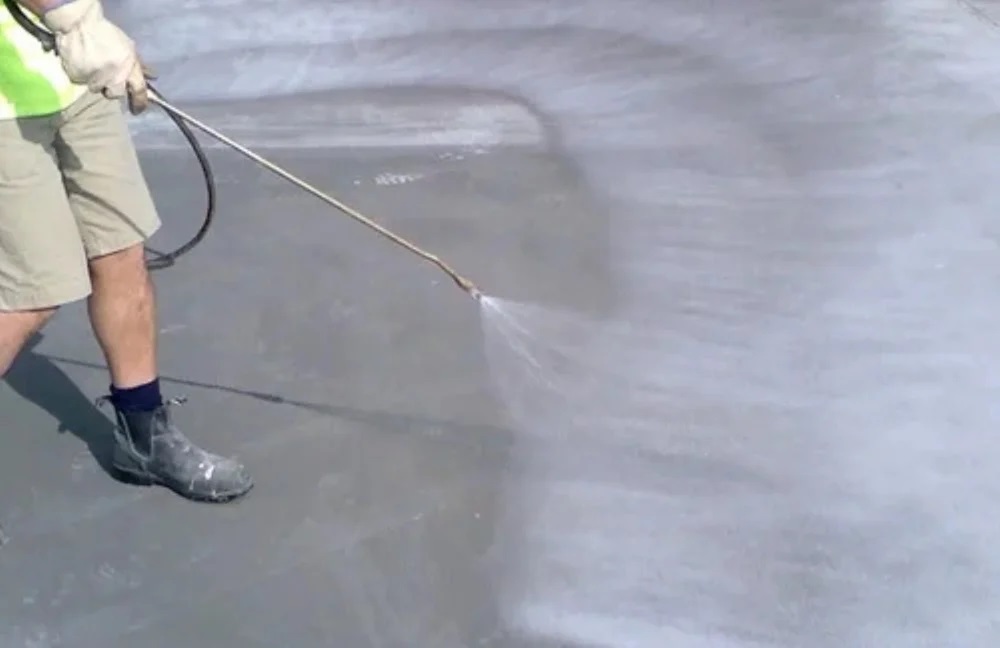Concrete is one of the most widely used construction materials worldwide, valued for its strength, durability, and versatility. However, achieving the desired performance of concrete relies heavily on proper curing techniques.
Among the various methods of curing, the use of concrete curing compounds stands out as an effective solution to enhance concrete durability. This article will explore curing compounds in depth, examining their types, benefits, application methods, and impact on concrete performance.
Understanding Curing Compounds
Concrete curing compounds are chemical products applied to freshly poured concrete to retain moisture and prevent rapid evaporation. They create a thin film over the surface of the concrete, effectively sealing in moisture and allowing for proper hydration. The hydration process is crucial for the formation of strong concrete, as it enables the cement particles to bond together and develop the desired strength and durability.
Types of Curing Compounds
Curing compounds can be categorized into two main types: water-based and solvent-based.
- Water-Based Curing Compounds
- Composition: Made from a mixture of water, film-forming agents, and other additives, water-based curing compounds are environmentally friendly and easy to apply.
- Advantages: These compounds are low in volatile organic compounds (VOCs), making them safer for both applicators and the environment. They are also easy to clean up with water.
- Limitations: Water-based compounds may not provide as durable a film as solvent-based options, which can lead to a shorter effective curing period.
- Solvent-Based Curing Compounds
- Composition: These compounds consist of a solvent mixed with film-forming agents and additives, providing a more robust and durable film over the concrete surface.
- Advantages: Solvent-based compounds are effective in forming a strong barrier against moisture loss and can withstand harsh environmental conditions.
- Limitations: They often contain higher levels of VOCs, making them less environmentally friendly and potentially hazardous to health if not handled properly.
Benefits of Using Curing Compounds
Incorporating concrete curing compounds into the concrete curing process offers several advantages:
- Improved Strength and Durability
- Proper curing ensures that the concrete achieves its designed compressive strength. Curing compounds help retain moisture, allowing for optimal hydration and reducing the risk of cracks, shrinkage, and other issues that can compromise durability.
- Reduced Cracking and Surface Defects
- Rapid evaporation of moisture can lead to surface cracking, which not only affects the aesthetics of the concrete but also its structural integrity. Curing compounds create a barrier that minimizes moisture loss, significantly reducing the likelihood of cracking and defects.
- Time and Labor Savings
- Curing compounds offer an efficient solution for large-scale concrete applications where traditional curing methods, such as water curing or wet burlap, can be labor-intensive and time-consuming. The application of curing compounds is typically quicker and requires less manpower.
- Versatility and Ease of Application
- Curing compounds can be applied using various methods, including spraying, rolling, or brushing, making them suitable for different project requirements. Their versatility allows them to be used in a wide range of concrete applications, from pavements and floors to precast elements.
- Extended Curing Window
- Curing compounds can extend the effective curing period beyond the initial curing time, allowing the concrete to maintain optimal moisture levels even after the surface feels dry. This extended curing window can be particularly beneficial in hot and dry climates.
Application Methods for Curing Compounds
Proper application of curing compounds is essential for maximizing their benefits. Here are some key considerations for effective application:
- Timing
- Concrete curing compounds should be applied as soon as possible after finishing the surface of the concrete. Ideally, the application should occur within 30 minutes of finishing to prevent moisture loss from evaporation.
- Surface Preparation
- Ensure the concrete surface is clean and free from contaminants such as dust, debris, or excess water before applying the curing compound. This will help promote better adhesion of the curing film.
- Application Techniques
- Use a sprayer, roller, or brush to evenly apply the curing compound. Ensure an even coverage without pooling or thick spots. The recommended application rate will vary depending on the specific product, so refer to the manufacturer’s instructions.
- Environmental Conditions
- Be mindful of environmental conditions during application. In windy or hot weather, the rate of moisture loss from the concrete will be higher, necessitating a more urgent application of the curing compound.
- Follow-Up
- Once applied, monitor the curing process to ensure the film remains intact and does not wear away prematurely. If necessary, additional layers of curing compound can be applied.
The Impact of Curing Compounds on Concrete Performance
Research and field studies consistently show that the use of curing compounds significantly enhances the performance of concrete. By ensuring adequate moisture retention, these compounds contribute to:
- Increased Compressive Strength: Properly cured concrete achieves higher strength levels, leading to improved load-bearing capabilities.
- Enhanced Durability: The risk of cracking and other surface defects is reduced, resulting in a longer lifespan for concrete structures.
- Better Resistance to Environmental Factors: Cured concrete is less susceptible to damage from freeze-thaw cycles, chemical exposure, and moisture-related issues.
Conclusion
Concrete curing compounds play a crucial role in enhancing the durability and performance of concrete. By providing an effective means of retaining moisture during the critical hydration phase, these compounds help prevent cracking and improve strength, ultimately leading to more resilient concrete structures.
With various types available, construction professionals can select the appropriate curing compound to meet the specific needs of their projects, ensuring optimal results and long-lasting performance. As the construction industry continues to evolve, the importance of effective curing methods will remain a cornerstone of successful concrete applications.
Also Read
Building Better: Why Admixtures Are the Key to High-Performance Concrete
DIY Made Easy: Must-Have Paint Sprayers for Home Projects

